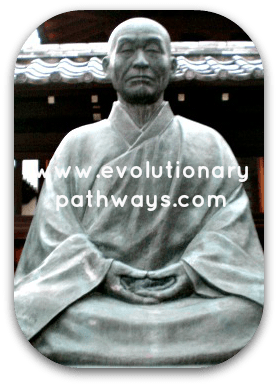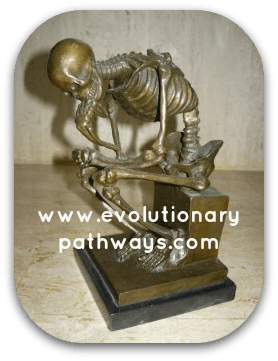The Language of Letting Go to Let Stress Flow
The language of letting go is spoken more loudly by the body than it ever could be through words. Bodily gestures and posture both indicate and encourage release. From clenched fist, to open palm, our energy and very being transforms. How does it happen? Is learning how to let go as easy as opening the palm of our hand? Can the skillful and proactive use of body language help us to let go in profound ways?
Letting Go of Thoughts or Things?
"As long as you think that the cause of your problem is "out there" - as long as you think that anyone or anything is responsible for your suffering - the situation is hopeless. It means that you are forever in the role of victim, that you're suffering in paradise."
~From Byron Katie's Book 'Loving What Is'
Usually when we think of letting go we think in terms of things or people.
Whether it's letting go of a relationship, letting go of the past, letting go of anger or learning to let go of resentment - we readily think in terms of letting go of something out there.
We fail to stop and ask ourselves an essential and potentially life changing question, "Can I really let things or people go?" If you're physically holding onto a person or thing, then surely you can let them go if you choose. But this isn't usually what we mean by letting go, is it?
In order to let go, you must first hold on. Yet, what is it that you're actually holding onto? And who or what's doing the holding? How do you hold onto 'the past', for example, when it's clearly long gone? Where do the present and the past intersect?
When's the last time you held a relationship in the palm of your hand? What about anger? Resentment? Negativity or fear? Intangible as these are, we still manage to take hold of them somehow. Or perhaps we have it all wrong and it's them that take hold of us? What is actually going on here?!
Ten Step Home Programs for Self-Hypnosis and Life Change
Experience the Power of Transformational Self-Hypnosis Downloads
Holding On and Letting Go
It seems obvious to say, but without holding on there would be no question of learning how to let go.
The first step in learning how to let things go is to realize that you can't let things or people go. No matter how badly you may want to, you can't let go of something you've never taken hold of in the first place. People and things are free. They were, and always will be, out of your grasp.
The reality of the matter is ...
You don't hold onto people or things. It's the ideas you have about people or things that have grab you. It's your idea of what happened and how you're being victimized by it that hurts. Your suffering is a story being told and you're the brilliant storyteller. If you want to let go, the story you're telling needs changing. To change your mindset and thought be willing to question your assumptions.
When it comes to letting go, the real work is with thoughts - not things. The real language of letting go isn't aimed without. It's aimed within.
Gripping Thoughts
Looking within you see how you grab onto certain thoughts and naturally let others go. Some thoughts get turned over and over again in you mind, while other thoughts simply pass you by.
How does this happen? How do you take hold of a thought, intangible as it is? How can a thought be gripped and how are you then gripped by thought in return? Where is this invisible hand of thought you use?
Finding this hand of thought allows you to then work to release its grip.
Opening the Hand of Thought
So our work is to be done with thoughts, not things. Ok, now what? How do you work with thinking to actually let go? Is there a language of letting go that can be used?
Fortunately, there is. The language of letting go is formulated in one of two ways:
- With the body (using posture and/or body language).
- With the mind (targeting thoughts and self-defeating beliefs with powerful questions).
Just as body and mind can be skillfully used to reprogram the subconscious mind, they can be used to help let go of thoughts just as well. The body-mind connection is both fundamental and strong.
Let's begin by taking a look at how the body can be used to release the grip of the mind ...
The Body Language of Letting Go
You can use a part of your body or the whole of it to let go and release. The body language of letting go brings immediate and profound results.
The body language of letting go speaks loud and clear, without a word need be spoken. Nowhere is this more evident than with the bodily posture of Zen meditation (also known as Zazen) ...
In the posture of Zazen the spine is kept straight, shoulders are relaxed, the chin is slightly tucked-in and the crown of the head reaches up to the sky.
This posture is one of the open 'secrets' that traditional wisdom masters have been passing down to their students for millennia. It's an effective 'tool' for unlocking the wisdom of the body and the power of letting go.
You needn't be a Zen student to tap into this ancient wisdom and use it to free yourself from over-involvement with thought. The elements that make up the posture of Zazen are accessible to one and all.
Here is what to look out for as you practice the posture and body language of letting go ...
Unmistakable Signs of Release
The body doesn't lie. It reveals both to yourself and to others where your mind is really at. Here are some of the nuances of freedom to pay attention to ...
- An upright spine
An upright spine is a physical representation of an unobstructed flow of energy through the body. When energy is stuck or backed up, it's easy for thoughts to get stuck and backed up too. Consciously and proactively work on straightening out your spine to keep your energy and thoughts flowing. - Chin tucked-in and the crown of the head stretching skywards
These physical manifestations are actually an extension of the first point of keeping your spine straight. As the chin points forward, the head tilts back and a kink is formed in the spine in the back of the neck. Keeping the chin in and the crown reaching upwards helps keep the spine straight and your energy flow healthy. - Eyes rested and looking forward
It's been said that, "The eyes are the windows to the soul" and for good reason. The mind will go where your eyes are looking. In martial arts this becomes quickly evident. Look at the ground and your energy gets drawn towards the ground and you find yourself licking the ground. Keep your gaze looking forward and your thoughts will continue rolling forward too.
Additionally don't focus on things too intently. Rest your gaze on things instead of trying to 'grab' or 'stop' them with your look. Similarly don't let your eyes jut around restlessly. This scatters your energy and peace of mind allowing thoughts to grab hold of you as they will. - Shoulders relaxed
The shoulders are an area of the body where we tend to hold a lot of tension. It's quite literally a repository of thoughts and ideas you've been holding onto, often for years. Consciously and proactively work on releasing and relaxing the shoulders to help you let go and release like few other things can. As you get into the habit of releasing and relaxing your shoulders, you'll become increasingly able to let things go. - Jaw muscles relaxed
Another area we commonly hold a lot of tension is our jaw. When you pay attention and focus on relaxing this area you can prevent unconscious tensions from accumulating.
Relaxation is a mind-body discipline in its own right and takes practice of course. Now contrast the description and photo of the body language of letting go as outlined above with this photo below ...
This is the body language of holding on. How completely different it looks from the body language of letting go!
The first posture exudes sovereignty over the mind; the second demonstrates capitulation to it. The first posture suggests a lightness and freedom of being; where the second brings heaviness and oppression to mind.
If your own posture and inner feeling is truer to the second photo than it is to the first, it's no wonder you might have a hard time letting go. Adjust yourself now to begin 'speaking' the body language of letting go instead.
The body-mind connection is indelible and strong. Speak with your body to help release your mind and bring more freedom immediately into your life. If your body has already spoken, you can aim to enlist the mind to help you further let go. The path is to question ...
Powerful Questions for Letting Go
The body is a powerful 'tool' and ally when it comes to releasing the grip of the mind and letting go. Its power is in its silence. The body 'speaks' but not in words. It doesn't give the mind anything to hold on to.
Yet there's a language of letting go that can also be spoken in words. This is where we enter the realm of powerful questions. Asking yourself deep thought provoking questions can help release the death grip your mind may have on particular thoughts - especially those that cause you pain by continuing to hold on.
Questioning your assumptions is a powerful way to change your mindset and your thoughts. It's also a powerful way to change your life.



